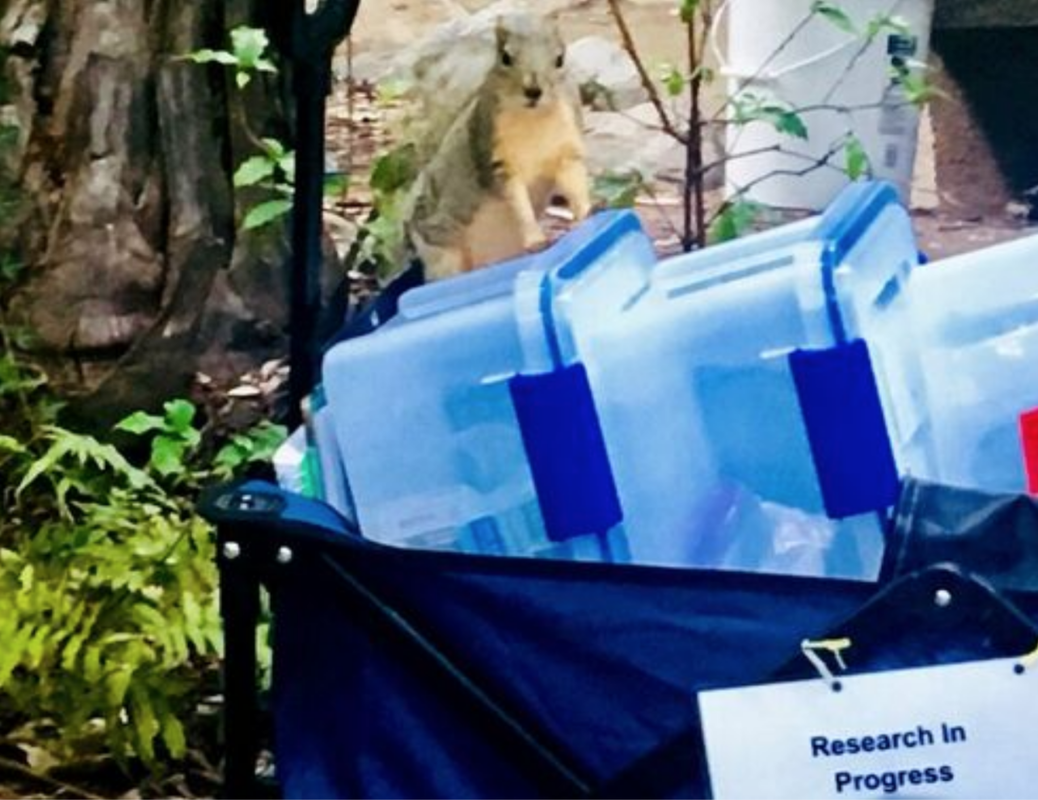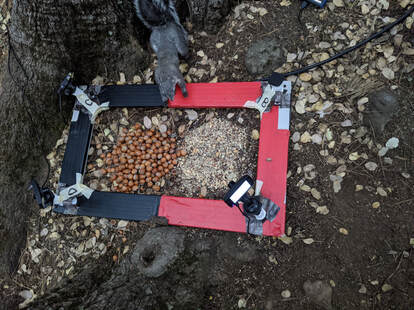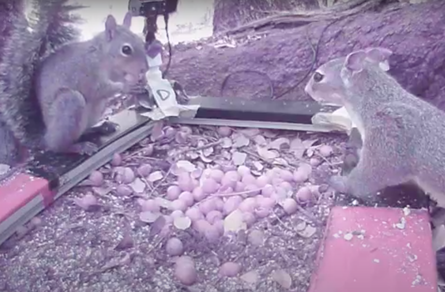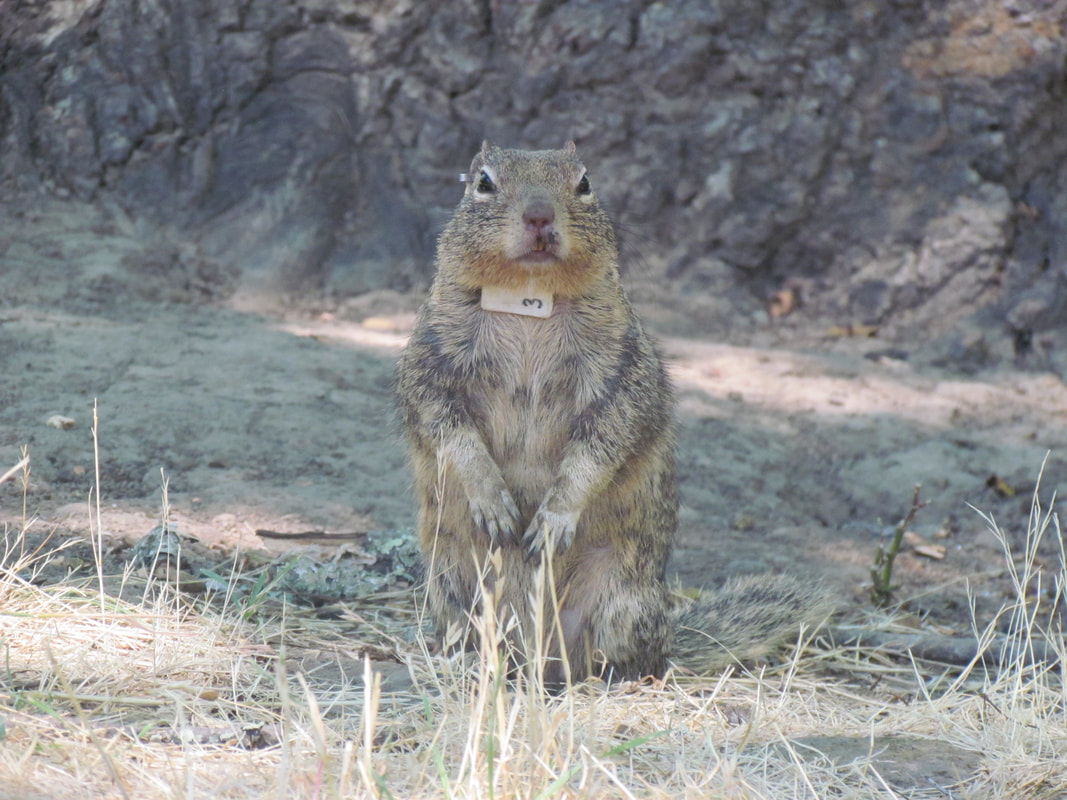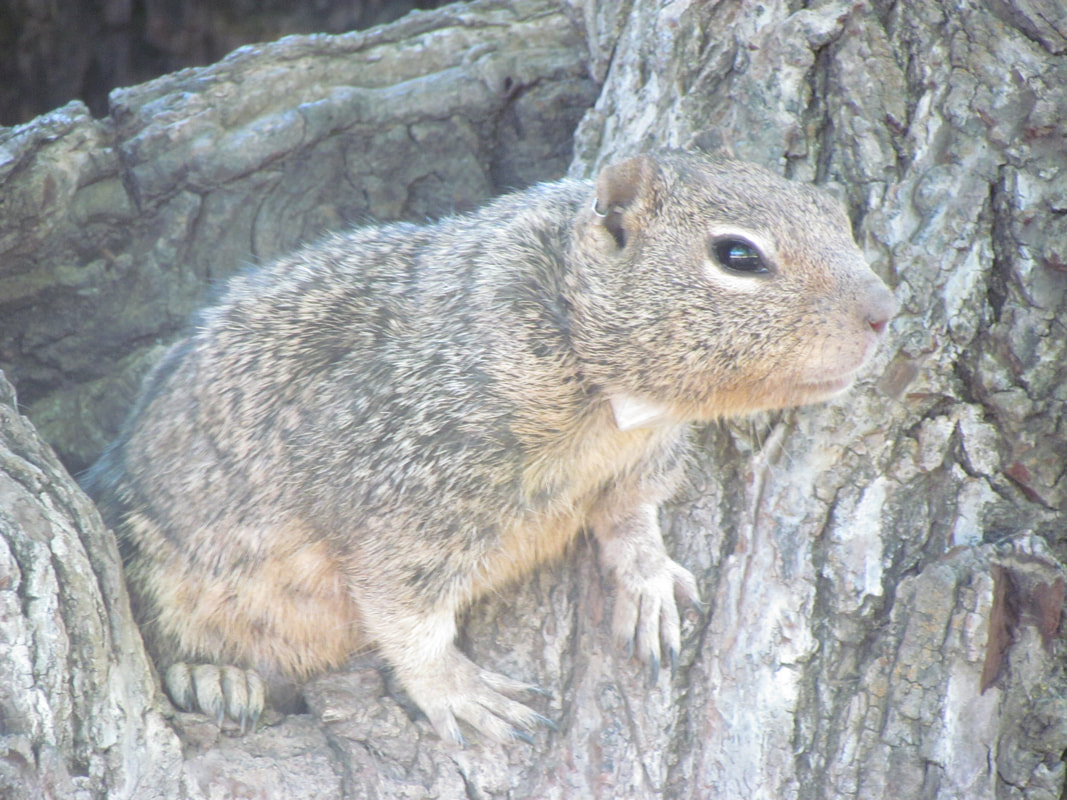Food-Storing
What do humans and some squirrel species have in common?
We both STORE FOOD!
Everyone needs to eat! Most animals rely on their environment to find food, but throughout the year the amount of food in any particular location may change. For example, in the winter when it snows, in many places trees no longer produce fruit or seeds. Wildlife has to find away to keep their bellies full all year long.
Some animals solve this food shortage problem by migrating, meaning they temporarily move to a new location that has more food during seasons when food is lacking in their home. Others sleep through the scarcity by hibernating. But, some super cool animals store food during times when it is abundant in the environment in order to eat it later when there is less food.
Many squirrel species store food. When foraging, these squirrels have to decide which food items to eat immediately and which to save for later. This is the important foraging decision that my current project is exploring. Currently, I am focusing on Western grey squirrels (Sciurus griseus), California ground squirrels (Spermophilus beecheyi), and Fox squirrels (Sciurus niger). For more information on these species take a look at the Squirrel Portfolios page!
We both STORE FOOD!
Everyone needs to eat! Most animals rely on their environment to find food, but throughout the year the amount of food in any particular location may change. For example, in the winter when it snows, in many places trees no longer produce fruit or seeds. Wildlife has to find away to keep their bellies full all year long.
Some animals solve this food shortage problem by migrating, meaning they temporarily move to a new location that has more food during seasons when food is lacking in their home. Others sleep through the scarcity by hibernating. But, some super cool animals store food during times when it is abundant in the environment in order to eat it later when there is less food.
Many squirrel species store food. When foraging, these squirrels have to decide which food items to eat immediately and which to save for later. This is the important foraging decision that my current project is exploring. Currently, I am focusing on Western grey squirrels (Sciurus griseus), California ground squirrels (Spermophilus beecheyi), and Fox squirrels (Sciurus niger). For more information on these species take a look at the Squirrel Portfolios page!
Squirrels are implanted with passive integrated transponders, these are just like the microchips we put in our cats and dogs that contain an individual number and name. Squirrels are then trained to approach a custom built automatic feeder that offers them the choice between two types of food: an item in a shell that can be stored for the future, and a tasty high caloric nut powder that can not be carried away and stored.
Once a squirrel approaches the feeder it dispenses the chosen food item while also scanning their PIT-tag identification, recording their name, their weight, the date, and the time of day. It also takes some really awesome pictures and videos of the squirrels interacting with the feeder!
Here is a video montage of all three study species learning to use the feeder.
The data collected by this feeder may help us learn more about how the time of day, the risk of predation, and social competition both within and between squirrel species impacts the preference for a storable versus only edible food item.
This work is being done at the Mildred E. Mathias Botanical Garden on the University of California, Los Angeles campus, and on the San Jacinto Mountains James Reserve (which is apart of the University of California Reserve System).
This work is being done at the Mildred E. Mathias Botanical Garden on the University of California, Los Angeles campus, and on the San Jacinto Mountains James Reserve (which is apart of the University of California Reserve System).
Social Factors May Influence Food-Storing Decisions
The presences of an audience including other squirrels and even birds may change how squirrels decide to prioritize storing food for the future. Afterall if others see where you are hiding your stash they may be more likely to steal right after you leave!
However, things may be even a little more complicated than that. It turns out that staying at the feeder to eat may also pose risks, like being chased away by more dominate individual, resulting in the complete loss of access to the feeder.
To learn more about this developing project check out our blog post from September: Shopping with Spectators: Our new experiment to see how social factors influence the food storing decisions of western grey squirrels.
However, things may be even a little more complicated than that. It turns out that staying at the feeder to eat may also pose risks, like being chased away by more dominate individual, resulting in the complete loss of access to the feeder.
To learn more about this developing project check out our blog post from September: Shopping with Spectators: Our new experiment to see how social factors influence the food storing decisions of western grey squirrels.
Here is my recent scientific talk from the Society for Integrative and Comparative Biology virtual conference in January 2021 that summarizes the progress of this work.
Squirrels in Motion
Most of my research requires me to observe squirrels interacting and moving through their environment. But squirrels can be hard to see sometimes! Especially when they are high up in trees or down underground. This is what motivated me to start exploring ways to monitor movement and space-use remotely using collars that act very similar to our smart watches.
Check out our blog post from February 2020: Exploring the Secret Underground Life of California Ground Squirrels!
Check out our blog post from February 2020: Exploring the Secret Underground Life of California Ground Squirrels!
Learn more about this work and my collaborator from this scientific talk presented at the 2020 Animal Behavioral Society Virtual Conference!
Proudly powered by Weebly

